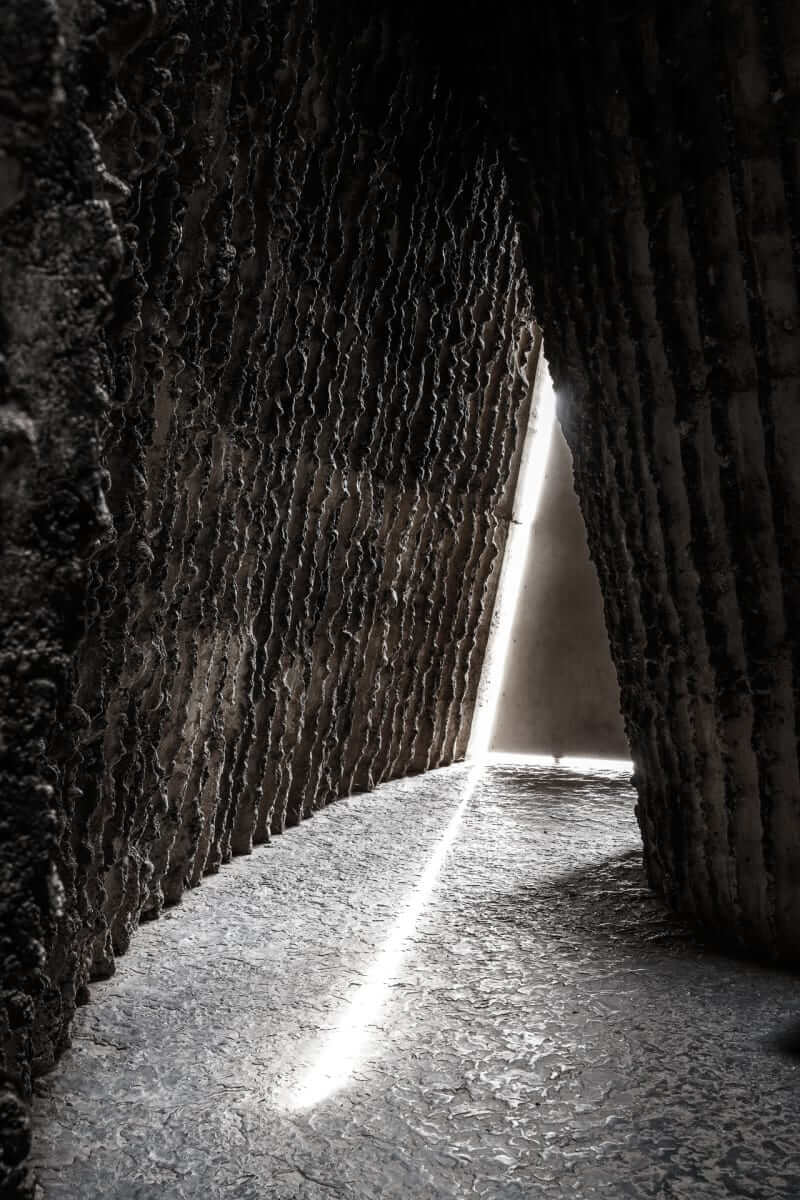The Art Of Architecture
About me
I inspire new possibilities to deepen love, intimacy and self-expression. I mainly write articles about that, but you'll also find refrences on design, fitness and finance. More
Architecture isn't only a science but also an art, and art is communication. So how can architecture communicate? How can a building move you?
I wrote an article called Architecture Deconstructed where I laid out the things to consider when making architecture. This article is similar but from a different angle. The architect Peter Zumthor summarizes it in the word atmosphere. It’s what you immediately feel as you enter a building or see a room, like the emotional response we have to music. The following are things that contribute to the atmosphere.

Bruder Klaus Chapel
Materials
Architecture collects materials and combines them to create spaces. Different materials create different spaces. The materials are the anatomy of the building. The building is a body made up of mass, fabrics, membranes, coverings, and that body touches you.
Material compatibility
It’s almost like chemistry how the same materials but in different amount leads to different results. We mix different materials and see how they react and give rise to something unique. Some combinations are better than others and it’s about finding those. You can even do a lot with the same material. Scratch it, polish it, drill it, change its dimensions, change it’s lighting, etc. and it’s different each time.
Sound
Different spaces handle sound differently. Rooms are like large instruments that collect sound, alters, and transmits it. Imagine your self in a kitchen and then in a train station and realize how the places feel differently just by the sound. Sound can make you feel many things. The architecture also makes its own sounds as part of it move, like the doors.
Temperature
Buildings have both their own temperatures but also relative temperatures to the outside. Would it be appropriate to be warmer than the outside? Cooler? Or for there to be no noticeable difference? Again, materials convey a lot of this.
Surrounding objects
A building doesn’t exist on it’s own. It’s populated with objects the users bring in and they also contribute to the atmosphere. They might sit well and join in a nice way or not. With this in mind, the architecture can deliberately make space for and orchestrate the placement of the objects.
Movement
Architecture isn’t only spacial but temporal, like music is. What is the experience in a given space over time? Do you feel compelled to move on or do you feel welcome to linger? Are you drawn in a specific direction or feel free to explore?
Proximity
Proximity, distance, dimensions, size, scale, mass in contrast to your own, all affect the atmosphere. A narrow opening vs a wide one. A feeling of wight vs lightness. Thin vs thick. A feeling of intimidation vs safety.
Crossings
One can say that architecture is all about barriers and borders. You make a box and immediately there is an inside and outside and a tension between them. Suddenly there is a smaller space in a larger space and then further divisions. Each gives rise to a transition you can handle artfully. As well as the feeling of being enclosed in the rooms themselves.
Lighting
An aspect that is easily forgotten and pushed aside is lighting. Where will there be light and where will the shadows fall? How do the surfaces handle the light? Do they reflect, sparkle, absorb? What color is the light? Is it natural or artificial?

Therme Vals
Last updated 27 June, 2017
Next article to read:
Architecture Deconstructed